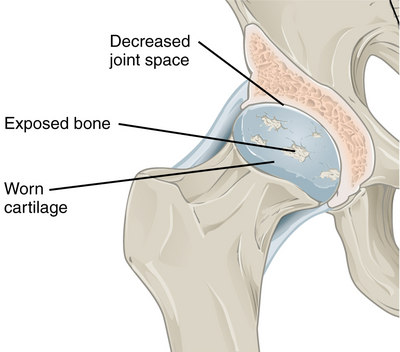◔
Hip Osteoarthritis: Difference between revisions
From WikiMSK
No edit summary |
No edit summary |
||
| Line 18: | Line 18: | ||
<references/> | <references/> | ||
{{Reliable sources}} | {{Reliable sources}} | ||
[[Category:Hip Joint]] | |||
[[Category:Osteoarthritis]] | [[Category:Osteoarthritis]] | ||
[[Category:Stubs]] | [[Category:Stubs]] | ||
Revision as of 09:21, 23 April 2021
This article is a stub.
- Dieppe PA good author to read
- Higher bone density can drive knee osteoarthritis but not hip osteoarthritis
- A minority have clear cut clinical and radiological recovery, especially with marked osteophytosis and concentric disease
- Superolateral migration of the femoral head is correlated with more rapid osteoarthritis progression, also with atrophic bone response
Epidemiology
The prevalence of radiographic hip osteoarthritis is 18.2% in men and 14.3%[1]
Clinical Features
There is no clear association between pain levels and radiographic severity of hip osteoarthritis. Up to 40% of patients with hip osteoarthritis have no pain. Patients with higher pain levels showed differences in sensitisation as measured by quantitative sensory testing.[2]
Treatment
Total hip joint replacement is usually effective for reducing pain. However 10% of patients have chronic postsurgical pain, and preoperative central sensitisation has been thought to be a risk factor for this.[2]
References
- ↑ Iidaka T, Muraki S, Akune T, et al. Prevalence of radiographic hip osteoarthritis and its association with hip pain in Japanese men and women: the ROAD study. Osteoarthritis Cartilage. 2016;24(1):117–123. DOI
- ↑ 2.0 2.1 Hattori T, Shimo K, Niwa Y, Tokiwa Y, Matsubara T. Association of Chronic Pain with Radiologic Severity and Central Sensitization in Hip Osteoarthritis Patients. J Pain Res. 2021;14:1153-1160 DOI
Literature Review
- Reviews from the last 7 years: review articles, free review articles, systematic reviews, meta-analyses, NCBI Bookshelf
- Articles from all years: PubMed search, Google Scholar search.
- TRIP Database: clinical publications about evidence-based medicine.
- Other Wikis: Radiopaedia, Wikipedia Search, Wikipedia I Feel Lucky, Orthobullets,



